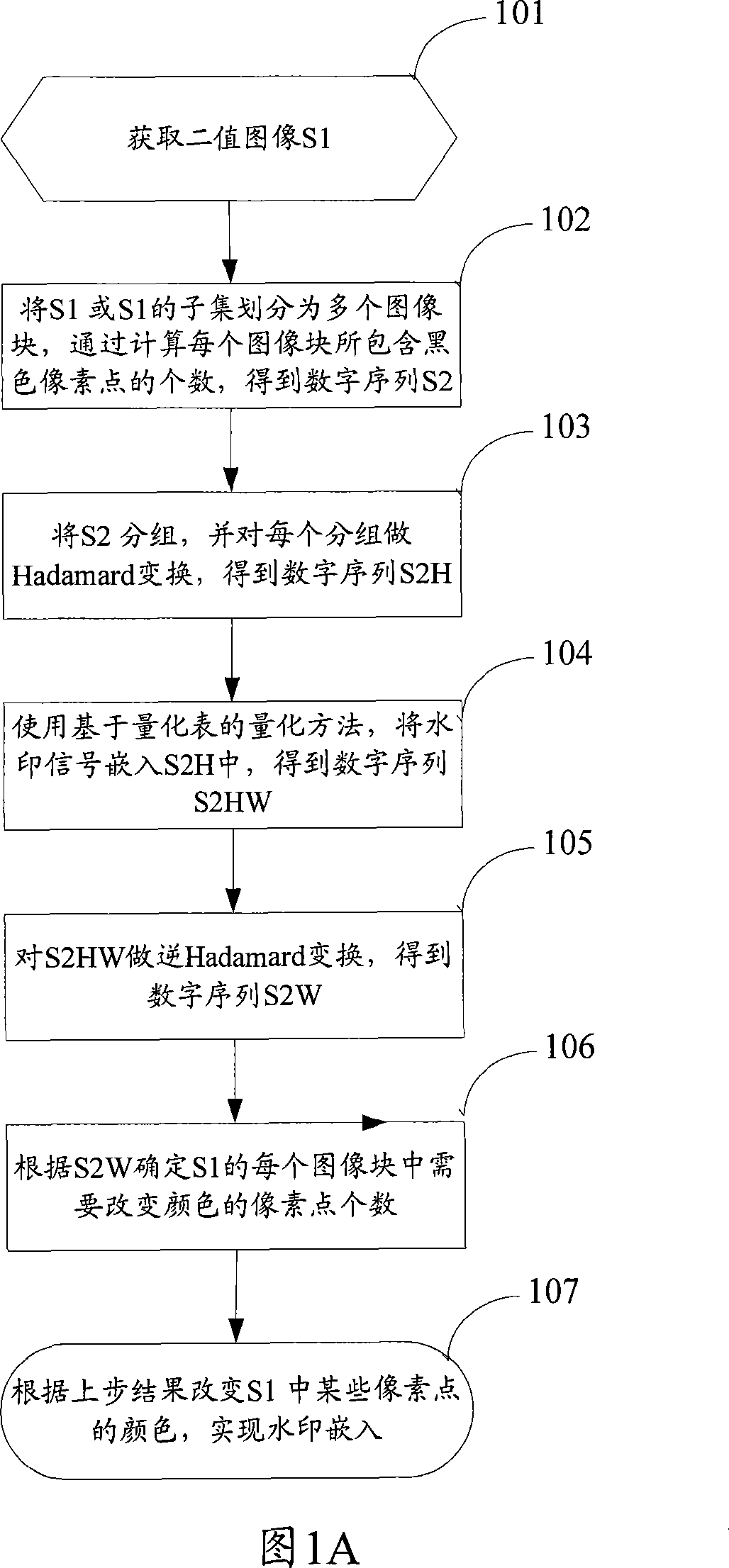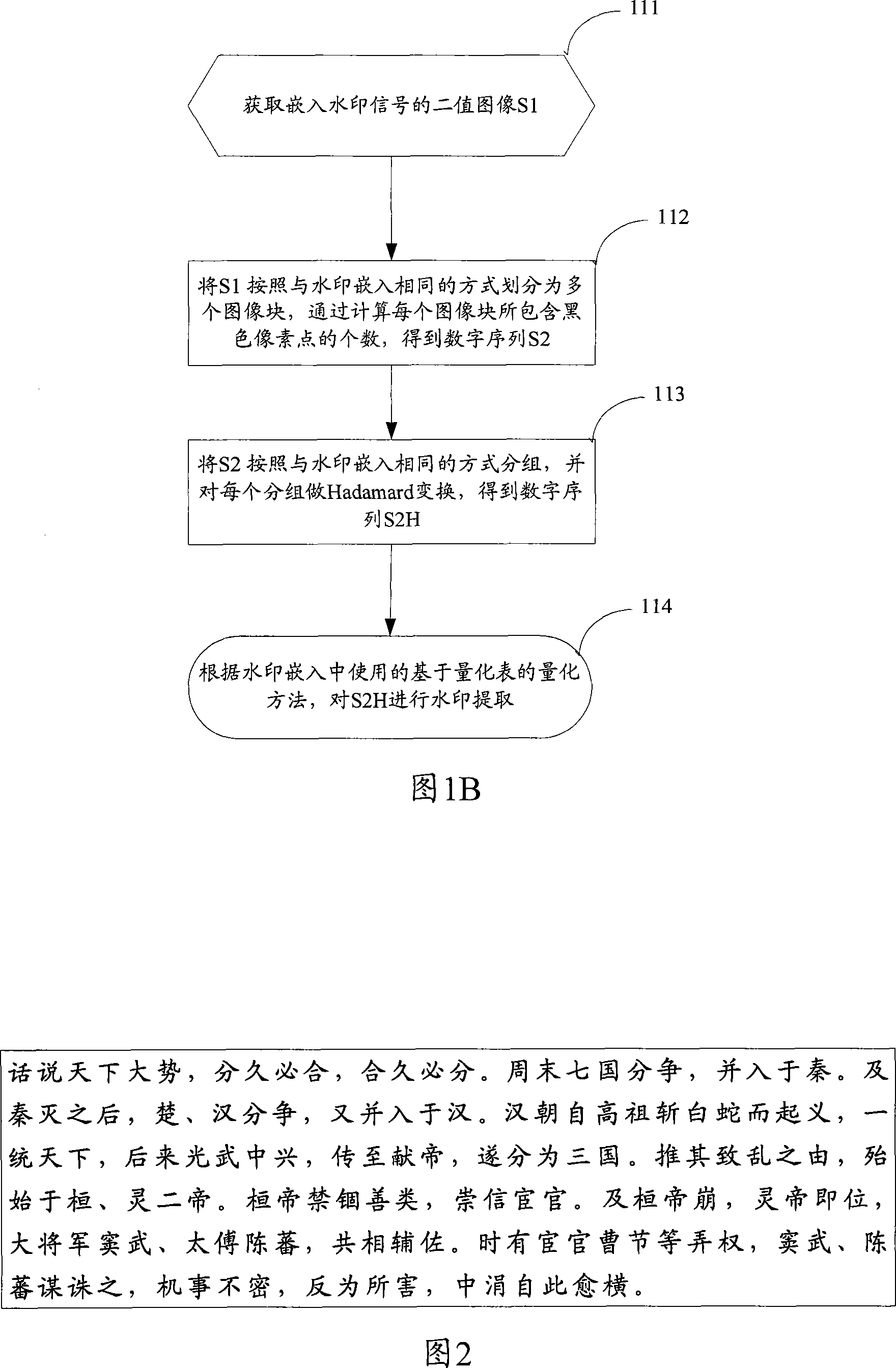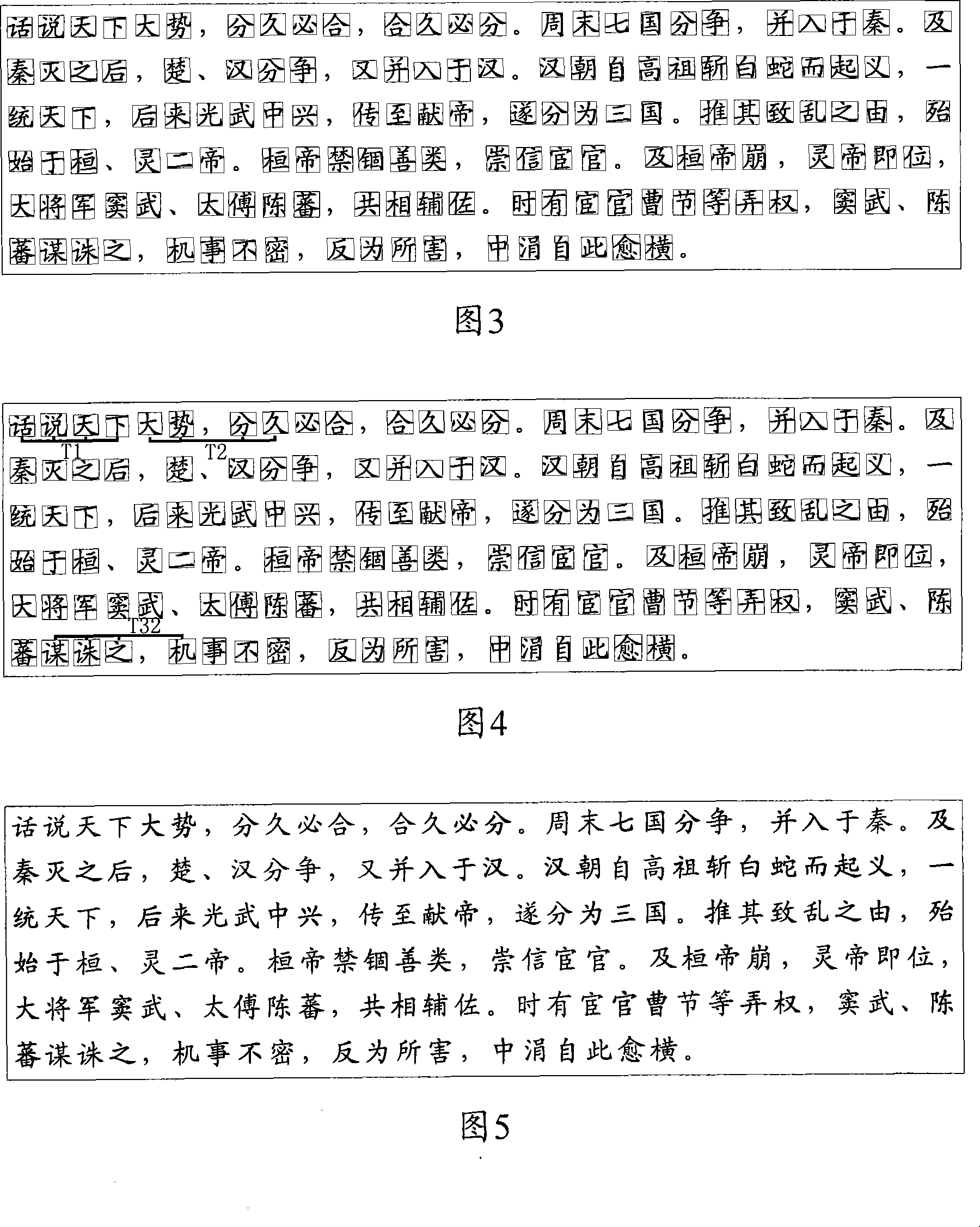Binary image digit water mark embedding, extraction method and device
A binary image and digital watermarking technology, applied in image data processing, image data processing, image communication, etc., can solve the problems of blind extraction of printing copying and scanning attacks, achieve resistance to printing copying and scanning attacks, good visual effects, Highly robust effect
- Summary
- Abstract
- Description
- Claims
- Application Information
AI Technical Summary
Problems solved by technology
Method used
Image
Examples
Embodiment 1
[0184] As shown in Figure 2, we use the method described in the present invention to embed 24-bit watermark information in a Chinese italic script small four-size text image. The process of watermark embedding and the required parameters have been described in detail above and will not be repeated here. Fig. 5 is the image after embedding the watermark, and Fig. 6A and Fig. 6B are a partial enlargement of the original image and the embedded watermark image. It can be seen that the visual effect of the image after embedding the watermark is good, and it is difficult to see the traces of the characters being modified. In fact, the characters embedded in the watermark are only slightly thicker or thinner, which does not affect the overall frame of the characters. After the image is printed, we scan the printed copy of the paper medium to an electronic file in the computer into a grayscale image format through a scanner, as shown in Figure 7, and then binarize the grayscale image ...
Embodiment 2
[0190] For a text image of a Chinese Song style small four-size character as shown in Figure 14, we use the method described in the present invention to embed 24-bit watermark information into it. The process and required parameters of watermark embedding are the same as those in the previous example and will not be repeated here. Figure 15 is the image after embedding the watermark. Then print, scan and binarize the image to obtain a text image in binary image format, as shown in FIG. 16 . All 24-bit watermark information can be successfully extracted through the watermark extraction algorithm.
[0191] Next, copy the printed paper document, and then scan and binarize the copy to obtain a text image in binary image format, as shown in FIG. 17 . For Figure 17, we can successfully extract all 24-bit watermark information using the watermark extraction algorithm.
[0192] Next, copy the paper document once again, and then convert it into a binary image as shown in Figure 18 t...
Embodiment 3
[0196] For a stamp image as shown in Figure 20 (enlarged twice display, the original image size is 1024 * 1024 pixels, and the original image display size is 4.4cm * 4.4cm), we use the method described in the present invention to embed 15 Bit watermark information. When embedding the watermark, the image is first divided into 20 sectors, and each sector is regarded as a group, so Figure 20 is divided into 20 groups, as shown in Figure 21, which shows Group 1, Group 2 and Group 20. Then calculate the number of black points in each group to obtain a digital signal with a length of 20, group the signal and perform fourth-order Hadamard transformation on each group. Next, watermark embedding is performed according to the algorithm of the present invention and using parity quantization to embed watermark information with a length of 20÷4×3=15 bits, wherein the quantization coefficient K=1500. Figure 22 is the image after embedding the watermark. Then the image is printed and scan...
PUM
 Login to View More
Login to View More Abstract
Description
Claims
Application Information
 Login to View More
Login to View More - R&D
- Intellectual Property
- Life Sciences
- Materials
- Tech Scout
- Unparalleled Data Quality
- Higher Quality Content
- 60% Fewer Hallucinations
Browse by: Latest US Patents, China's latest patents, Technical Efficacy Thesaurus, Application Domain, Technology Topic, Popular Technical Reports.
© 2025 PatSnap. All rights reserved.Legal|Privacy policy|Modern Slavery Act Transparency Statement|Sitemap|About US| Contact US: help@patsnap.com



